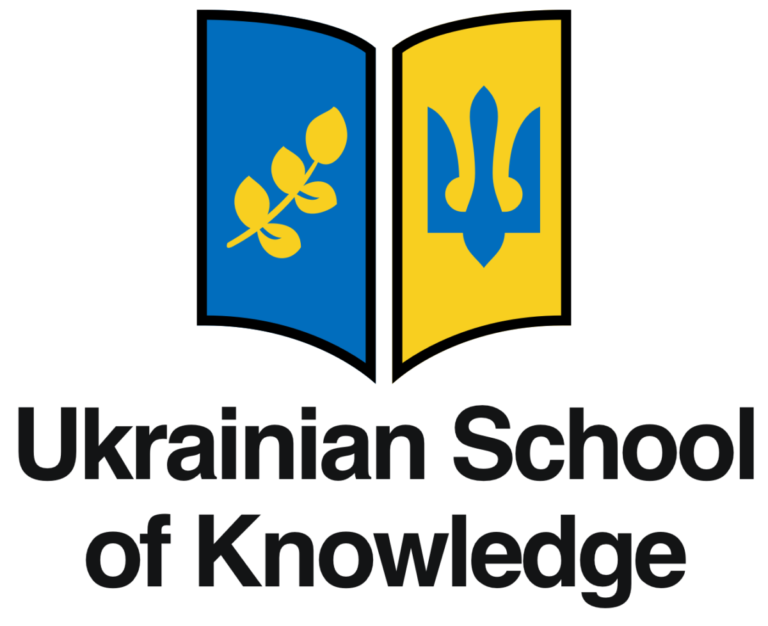Students Grading
Each student has the right to fair, impartial, objective, independent, non-discriminatory and honest assessment of their learning outcomes. The main types of student assessment are formative, ongoing, summative (thematic, semester, annual) assessment, and exam results (8th grade).
Since 2000, a 12-point grading scale has been used in Ukrainian schools. The criteria for assessing student achievement in the general secondary education system were approved by Order No. 329 of the Ministry of Education and Science of Ukraine dated April 13, 2011.
Assessment is carried out based on the results of the following types of evaluation:
- Oral (individual, group and frontal questioning)
- Written (independent and diagnostic work, testing)
- Graphical (work with diagrams, graphs, schemes, contour maps)
- Practical (educational projects, product manufacturing)
The 12-point grading system distinguishes 4 (four) levels of student achievement:
- First level – Initial (1-3 points). The student’s answer is fragmentary, characterized by initial ideas about the subject of study.
- Second level – Average (4-6 points). The student reproduces the main educational material, is able to perform tasks according to the model, possesses elementary learning skills.
- Third level – Sufficient (7-9 points). The student knows the essential features of concepts, phenomena, connections between them, is able to explain the main patterns, and independently applies knowledge in standard situations, possesses mental operations (analysis, abstraction, generalization). The student’s answer is correct, logical, substantiated, although it lacks their own judgments.
- Fourth level – High (10-12 points). The student’s knowledge is deep, strong, systematic; the student is able to apply it to perform creative tasks, their educational activity is marked by the ability to independently evaluate various situations, phenomena and facts, identify and defend a personal position.
In case of non-compliance of the student’s academic achievements with the assessment system levels, the mark “not certified” is made.
When determining the level of student achievement, the following are taken into account:
- Characteristics of the answer: correctness, logic, validity, integrity; quality of knowledge; formation of general educational and subject skills and abilities; level of mastery of mental operations: ability to analyze, synthesize, compare, classify, generalize, draw conclusions, etc.
- Ability to identify problems and solve them, formulate hypotheses
- Independence of evaluative judgments
The results of the annual assessment are reflected in the certificate of achievement (report card) issued to the student annually when transferring to the next year of study.
Each subsequent level of requirements incorporates the requirements for the previous one, as well as adds new ones.
Functions of Assessment
When choosing an assessment methodology, it is worth remembering that it has several main functions:
- Motivational – activates internal and external motives for learning
- Diagnostic – helps determine the level of student competence, awareness of gaps in their knowledge
- Corrective – directs students’ efforts to overcome difficulties
- Prognostic – sets learning goals for the future
- Developmental – motivates reflection and self-improvement
- Educational – provides feedback between teacher and student
- Upbringing – attunes the child to develop their own organization
- Managerial – provides necessary information for decision-making
For example, when a teacher receives feedback from a student, they understand whether the student needs additional support while completing a task. Meanwhile, the child can understand what they need to improve in their skills.
Each grade should correspond to the following criteria:
- 1 point – students distinguish objects of study
- 2 points – students reproduce a small part of the educational material, have vague ideas about the object of study
- 3 points – students reproduce part of the educational material; with the help of a teacher perform elementary tasks
- 4 points – with the teacher’s help, students reproduce the main educational material, can repeat a certain operation or action according to the model
- 5 points – students reproduce the main educational material, are able to define concepts and formulate rules with errors and inaccuracies
- 6 points – students show knowledge and understanding of the main provisions of the educational material. Their answers are correct but not sufficiently meaningful. They are able to apply knowledge when performing tasks according to a model
- 7 points – students correctly reproduce educational material, know fundamental theories and facts, are able to give some of their own examples to confirm certain thoughts, partially control their own educational actions
- 8 points – students’ knowledge is sufficient. Students apply the studied material in standard situations, try to analyze, establish the most essential connections and dependencies between phenomena and facts, draw conclusions, generally control their own activities. Their answers are logical, although they have inaccuracies
- 9 points – students have good command of the studied material, apply knowledge in standard situations, are able to analyze and systematize information, use well-known evidence with independent and correct argumentation
- 10 points – students have complete, deep knowledge, are able to use it in practical activities, draw conclusions, make generalizations
- 11 points – students have flexible knowledge within the requirements of educational programs, use it in different situations with arguments, are able to find information and analyze it, pose and solve problems
- 12 points – students have systematic, strong knowledge in the scope and within the requirements of educational programs, consciously use it in standard and non-standard situations. They are able to independently analyze, evaluate, summarize the mastered material, independently use sources of information, make decisions.


